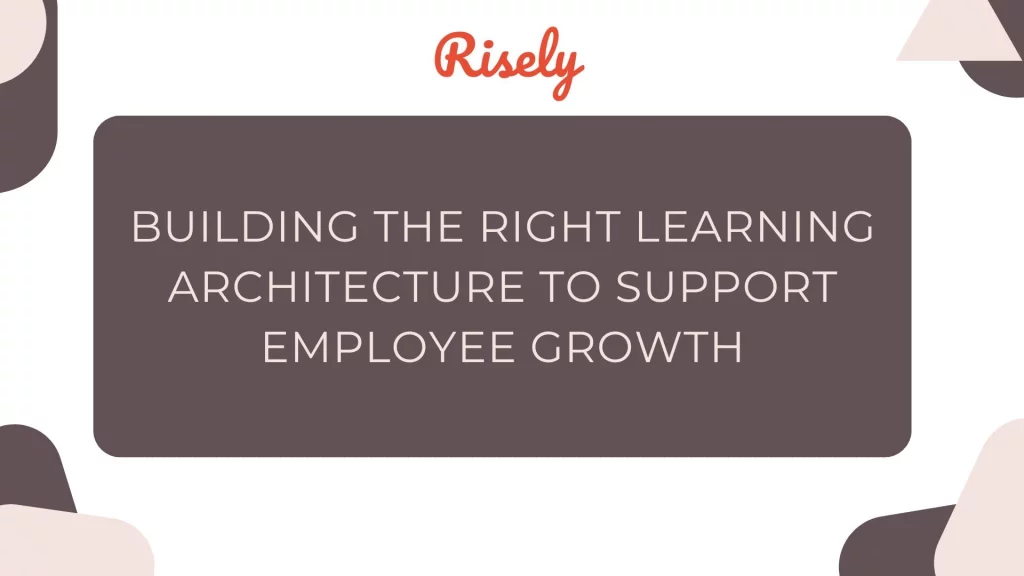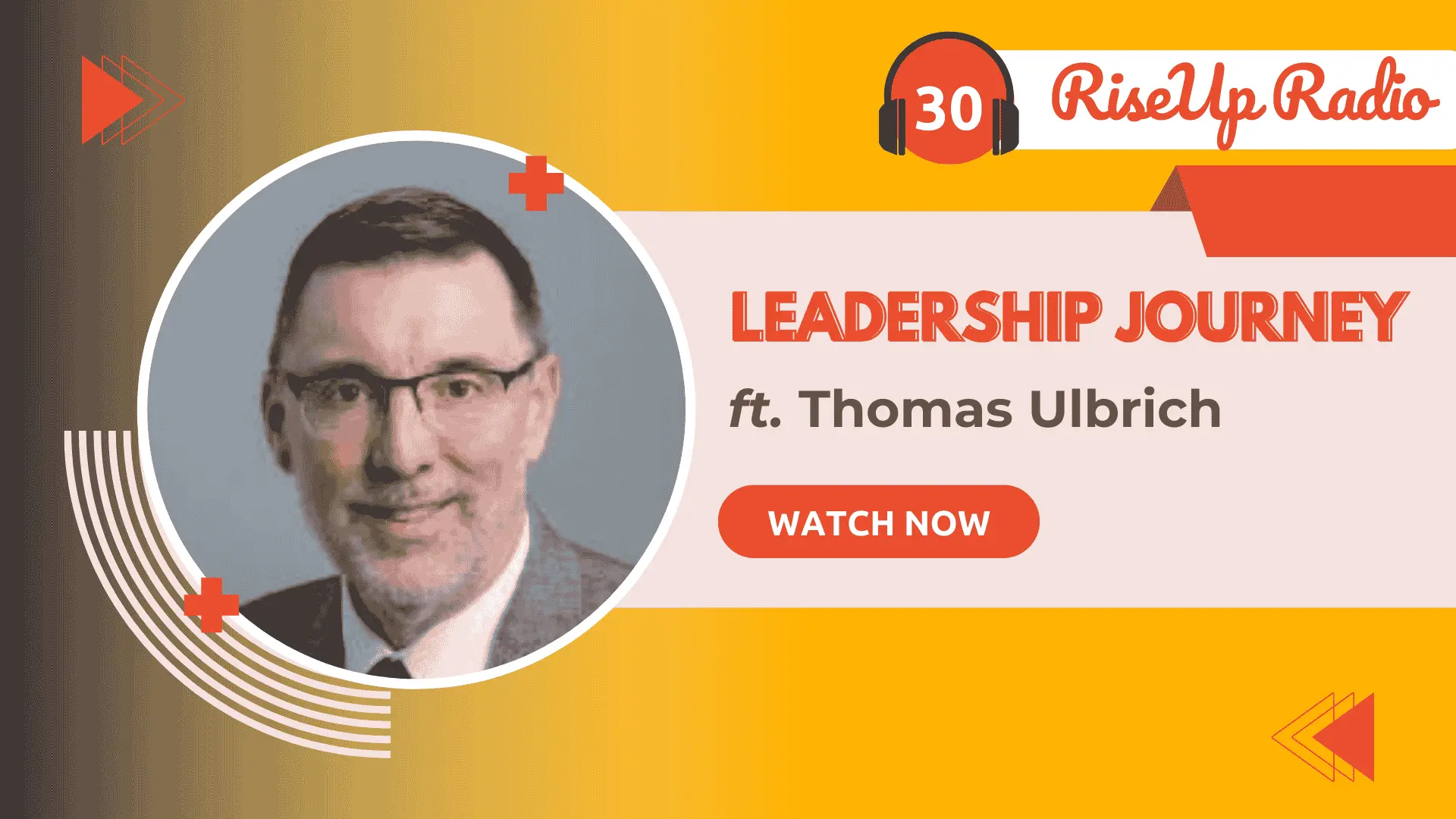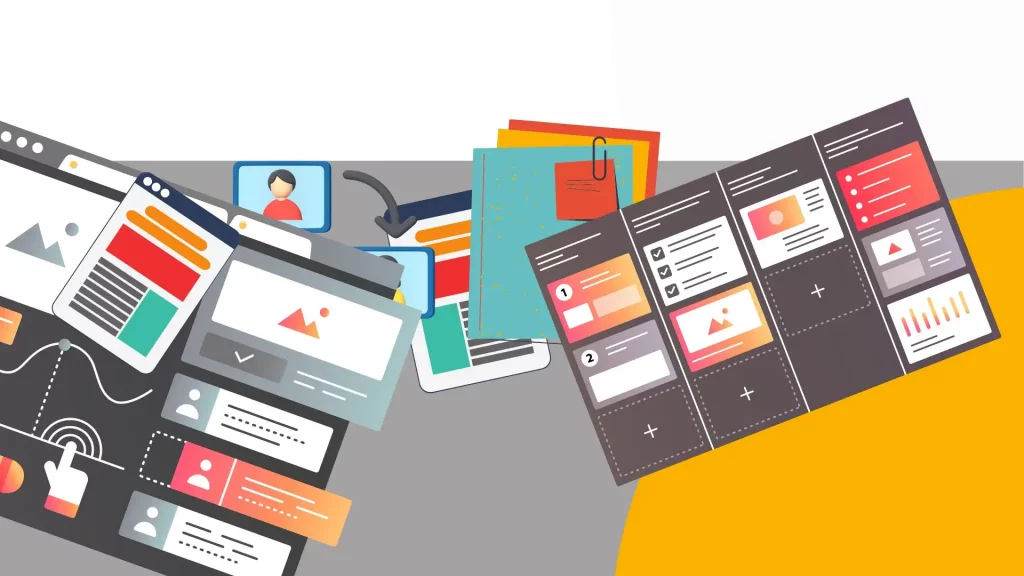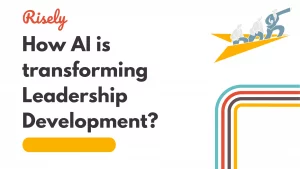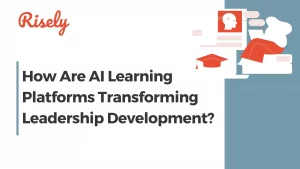Building The Right Learning Architecture To Support Employee Growth
Your employees are the backbone of your organisation’s success, and investing in their growth is the smartest move you make. But where does it all start? With a strong learning architecture—a strategic framework that doesn’t just train your workforce but empowers them to thrive. When you build a well-structured learning system, you give your team the tools they need to grow, stay productive, and contribute to your organisation’s long-term success. It’s about more than just skills; it’s about creating a culture of continuous improvement and adaptability. In this blog, we’ll walk you through how designing the right learning architecture transforms your workforce and gives your organization the edge it needs to flourish in today’s ever-changing business world.What is Learning Architecture?
Learning architecture is the strategic framework that shapes how learning initiatives are designed, delivered, and evaluated within your organization. It encompasses everything from clear learning paths, available resources, and training programs to the integration of the latest technologies.
This architecture ensures that every learning experience is closely aligned with your business goals, facilitating skill development, increasing employee engagement, and boosting overall performance. A well-structured learning architecture fosters a coherent atmosphere in which your team grows, develops their talents, and contributes to your organization’s success. By providing targeted learning experiences, your team will be equipped with the skills necessary to flourish in their professions and develop their careers. However, learning architecture encompasses more than just skill development. It also increases engagement and retention, both of which lead to improved employee performance. When you create a clear, meaningful learning framework, you help to nurture a workforce that is adaptive, ready to face new challenges, and prepared to support long-term growth.What are the Key Components of a Winning Learning Architecture?
An effective learning architecture is an interconnected system that promotes both company growth and personnel development. To be effective, your learning architecture must have a well-aligned and personalized learning plan, a variety of learning techniques, a strong technology infrastructure, and a clear mechanism for analyzing the impact of educational activities. Personalized learning paths are a critical element of this system. Your team members have diverse learning preferences, so offering tailored experiences is essential. Personalized learning helps boost engagement, enhance retention, and drive motivation. Customizing learning to meet individual needs ensures that your employees remain connected to their growth and development within the company.Defining Learning Strategy Aligned with Business Goals
Creating a clear learning strategy begins with a deep understanding of your organization’s long-term vision and the identification of skills gaps that need to be addressed. By setting SMART goals—Specific, Measurable, Achievable, Relevant, and Time-bound—you ensure that your learning initiatives are results-driven and directly contribute to business success. This targeted approach guarantees that every training program plays a vital role in improving performance and increasing productivity.Identifying Learning Modalities: Blended, eLearning, and On-the-Job Training
A comprehensive learning architecture integrates multiple learning modalities to meet the diverse needs of your team. Key learning methods include:- eLearning: Technology-driven, flexible training that your employees access at their own pace. It’s ideal for self-directed learning, providing efficiency and accessibility for your team.
- On-the-Job Training: Hands-on learning experiences that enable employees to immediately apply new skills in the workplace, bridging the gap between theory and practice.
- Blended Learning: A combination of online modules and in-person workshops that promotes flexibility, encourages interaction, and enhances collaboration across various learning preferences.
What are the Steps to Build a Robust Learning Architecture?
Building a robust learning architecture needs careful strategic planning, smooth execution, and continuous review. It should be consistent with your organization’s aims while remaining adaptable enough to changing needs. Below is how you create a framework that supports growth and success for your organization:1. Assess Your Current Learning Ecosystem
To build a robust learning architecture, begin by assessing your existing learning programs, resources, and platforms. This evaluation helps determine how well they align with your organization’s goals and address any skill gaps. It’s important to identify areas that need improvement, such as outdated content, new tools, or better delivery methods. This foundational step ensures that your learning architecture is relevant, responsive, and capable of supporting your team’s evolving needs.2. Leverage Technology to Enhance Learning
Once you’ve evaluated your current system, the next step is to incorporate the right technology to improve the learning experience. Tools like Learning Management Systems (LMS), video conferencing platforms, and gamified elements make learning more accessible and engaging for employees. These technologies allow you to track progress, provide personalized learning experiences, and keep employees motivated throughout their development. The right tech not only enhances accessibility but also amplifies the reach and impact of your learning initiatives.3. Design Personalized Learning Paths
Personalization is key to a successful learning architecture. By creating tailored learning paths that cater to the individual preferences and career goals of your team, you enhance engagement and retention. This approach ensures that learning is relevant and aligned with both your team’s personal growth and your organization’s objectives. When employees feel their development is personalized, they remain more invested in their learning, which drives both their individual success and organizational growth.4. Integrate Continuous Feedback and Evaluation
Building a strong learning architecture requires ongoing constructive feedback and evaluation. Regularly collecting feedback from employees helps you understand their challenges and any areas of improvement in the learning experience. Using performance metrics, you assess the effectiveness of your initiatives and make adjustments where necessary. Continuous feedback creates a dynamic learning environment, enabling your organization to quickly adapt to the changing needs of your team and ensure that learning stays relevant.5. Foster a Culture of Lifelong Learning
Lastly, build a culture of lifelong learning within your organization. Leaders play a crucial role in promoting this mindset by encouraging continuous development opportunities. Encourage knowledge sharing, collaboration, and mentorship to ensure that learning is ingrained in your team’s daily activities. By supporting a culture that values learning, you ensure that your organization stays adaptable and ready to face future challenges. A lifelong learning culture not only benefits employees but also helps your organization stay competitive and future-ready. By following these steps, you build a learning architecture that empowers employees and supports long-term success, ensuring your organization is prepared to thrive in an ever-evolving landscape.The Benefits of an Integrated Learning System
An integrated learning system simplifies the learning experience for your team and your organization. By centralizing all learning resources on a single platform, they easily access the materials they need, reducing confusion and saving valuable time. Real-time insights into learner progress, engagement, and the impact of learning initiatives allow you to make data-driven decisions, enhancing the effectiveness of your programs. With everything in one place, you streamline content delivery and tracking, making the entire learning process more efficient. This accessibility empowers your employees to take control of their learning journeys, enabling them to upskill at their own pace and stay engaged. As a result, your organization will see an increase in productivity and smoother integration of new skills into the workplace, leading to improved performance.Boosting Engagement and Knowledge Retention
Creating an environment where your employees are motivated to engage actively and retain what they’ve learned is critical. When employees engage meaningfully with the content, they are more likely to apply their knowledge and continue developing their skills. Consider incorporating interactive elements such as quizzes, polls, and real-world scenarios to increase engagement. Interactive learning experiences have been shown to significantly boost retention by bridging the gap between theory and practical application. According to research by Vorecol, these experiences lead to improved long-term retention and greater employee engagement in corporate training. This approach not only makes learning more enjoyable but also ensures that employees are better prepared to apply their new skills effectively. For instance, Laing O’Rourke, a leading construction firm, transformed its staff training by adopting “bite-sized” courses, inspired by social media platforms like Instagram and TikTok. This innovative method led to a dramatic increase in employee engagement. Previously, 80 employees were trained each month, but now over 700 employees are actively engaging with training materials every month. An engaging learning experience makes learning delightful, which promotes long-term retention. Your team is more likely to return to the topic and use what they’ve learned in the workplace, resulting in long-term behavior changes and enhanced performance.Measuring the ROI of Learning Initiatives on Organizational Performance
Measuring the return on investment (ROI) of your learning programs is essential to understanding their impact on your organization. Key metrics include:- Course completion rates: Assess employee engagement and commitment.
- Knowledge retention: Measure how much employees remember and apply after training.
- Behavioural shifts: Observe changes in employee behaviour and performance on the job.
Overcoming Common Challenges in Learning Architecture Implementation
Implementing a learning architecture is revolutionary, but it is not without problems. Common difficulties include resistance to change, technological challenges, and budgetary limits. Overcoming these challenges requires a mix of strong leadership, a clear strategy, and a learning-centered culture. As an L&D leader, you play a critical role in driving transformation within your organization. By embracing continuous learning yourself, you set the example for your entire team, building a culture where growth and development are prioritized. When your team sees you valuing their growth, they are more likely to adopt the same mindset, leading to a ripple effect across the organization. You ensure a smoother transition by identifying potential challenges early and addressing them proactively keeping your organization on course to achieve its goals.Navigating Technological Challenges in Learning Systems
Technological challenges often play a major role in the successful implementation of a learning architecture. One of the biggest hurdles is selecting the right Learning Management System (LMS). A poor choice in LMS leads to inefficiencies and low user adoption. You must select a system that fits your organization’s unique needs, aligns with your learning objectives, and fits within your budget. Data security is another vital consideration when integrating new technology. Ensuring the protection of sensitive employee data through strong cybersecurity measures and compliance with privacy regulations is non-negotiable. With remote work becoming more common, ensuring your LMS is accessible from different locations and devices is essential. Collaborating closely with your IT teams to ensure that connectivity and infrastructure requirements are met will assist in creating a seamless experience for your team.Cultivating a Continuous Learning Culture in the Workplace
A successful learning architecture is closely tied to fostering a culture of continuous learning. To build this culture, organizations must encourage employees to view learning as an ongoing process, not just a one-time event. Supporting a growth mindset, backed by effective leadership, is key to embedding this philosophy throughout the workforce. You should actively promote the value of learning by investing in development opportunities and creating an environment where knowledge-sharing and collaboration are encouraged. This not only helps employees grow but also strengthens the adaptability and resilience of your organization. A culture of continuous learning ensures that your team stays engaged and is prepared to meet both current and future challenges. With this mindset in place, your organization will stay ahead of the curve, fostering a workforce that is ready to innovate and thrive in an ever-evolving business landscape.Conclusion
Building a robust learning architecture is essential for your employees’ growth and your organization’s success. By aligning your learning strategies with business goals, embracing cutting-edge technologies, and fostering a culture of continuous development, your organization will not only keep pace with change—it will lead it. Investing in the right learning architecture ensures that your workforce remains prepared for the future, driving both individual and organizational success in an increasingly digital world.Avantika holds an undergrad degree in Political Science and Psychology, bringing a unique blend of analytical and psychological insight to her writing. With extensive experience in content creation and research, she crafts engaging and well-informed content that resonates with readers and drives meaningful conversations.
Ready to Take Learning and Development to the next level?
Discover Risely’s AI-powered coaching and personalized learning paths, designed to drive real impact.

